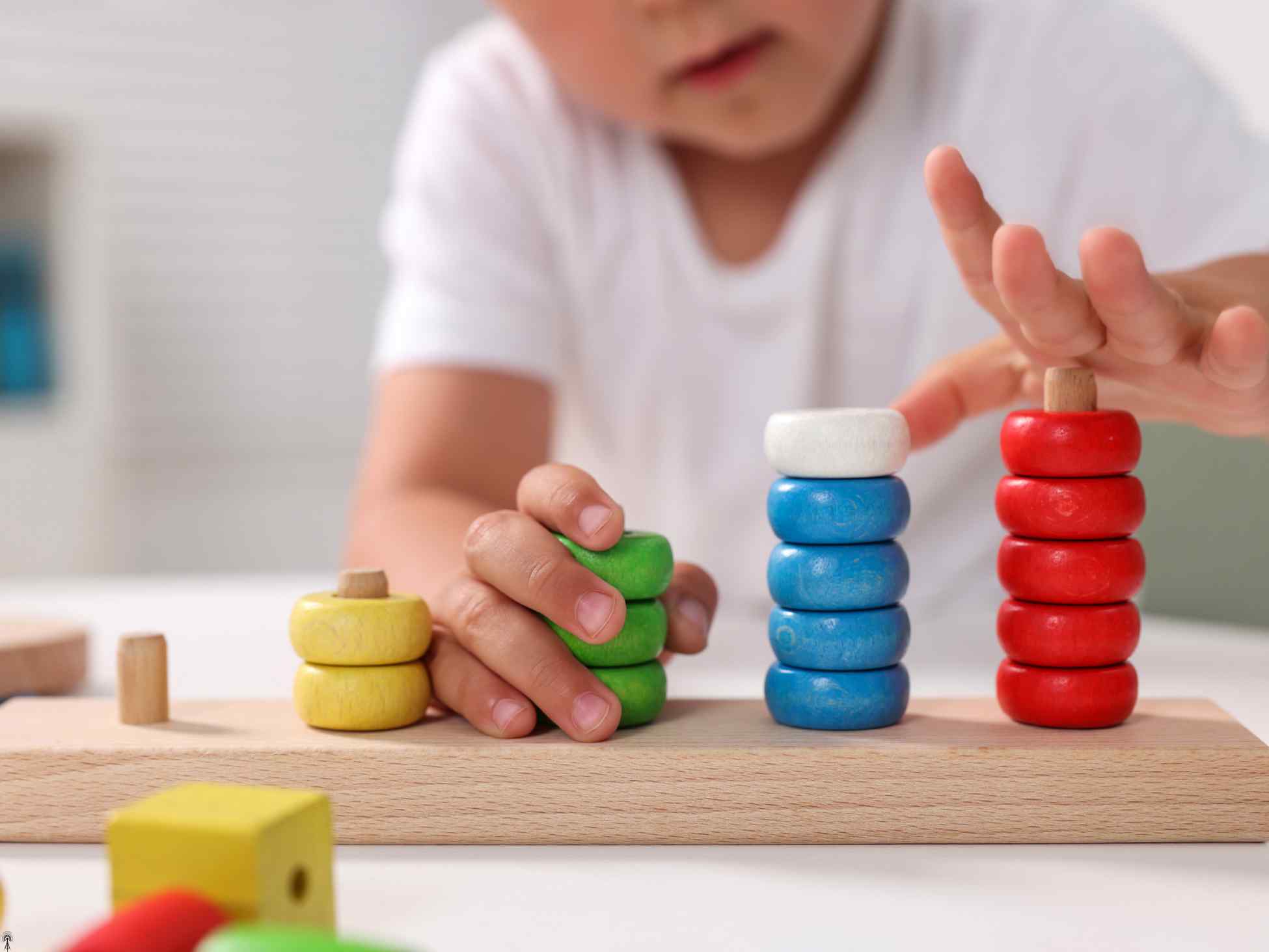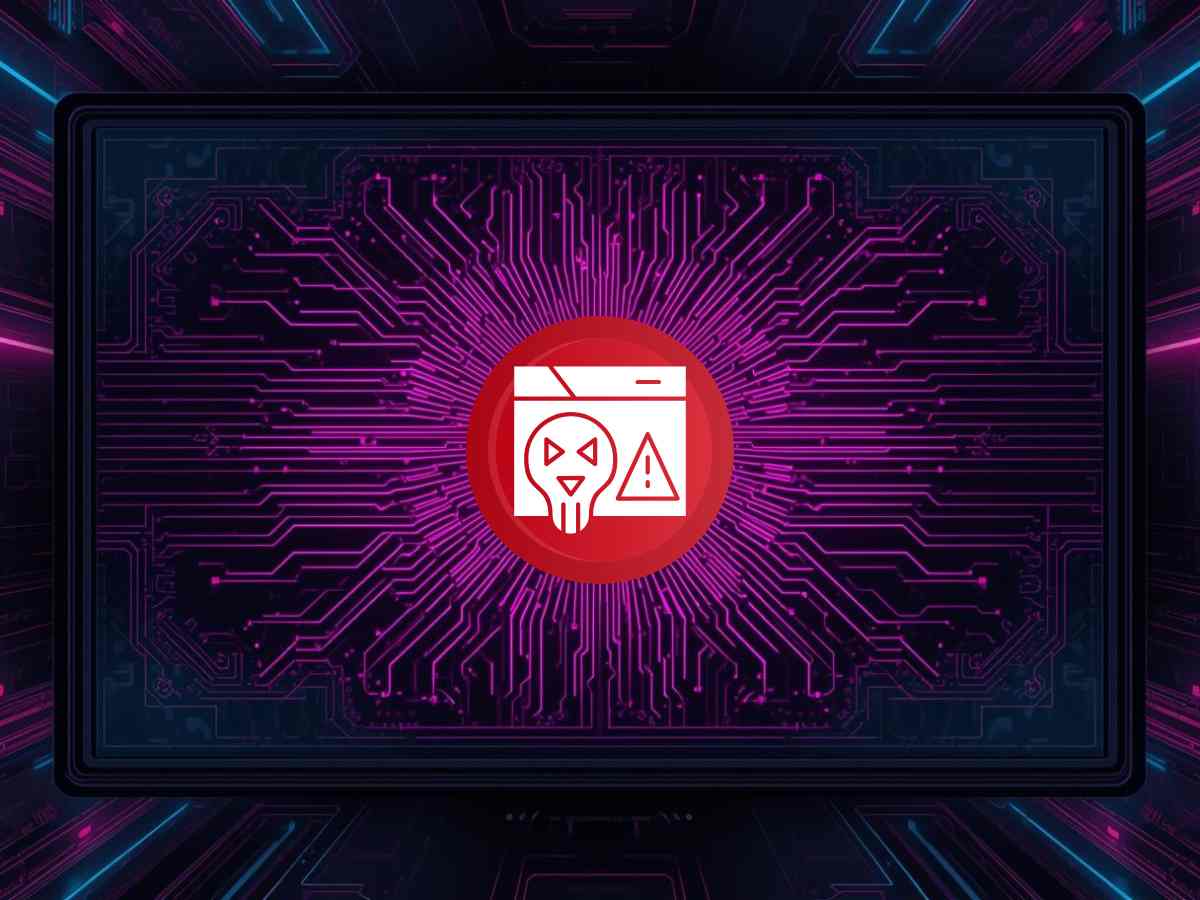The human mind is a fascinating thing. It can store memories from years ago, learn complex skills, and notice subtle connections that others might miss, all while deciding whether it is too early for another cup of coffee. Among its many abilities, there is one that quietly shapes almost every choice we make: pattern recognition.
We may not always notice it, but this skill is working in the background of our lives like an invisible personal assistant. It helps us make sense of what is happening, predict what might happen next, and also helps us respond to it.
What Exactly Is Pattern Recognition?
Pattern recognition is a cognitive skill of our brain to observe recurring patterns and then store the information, which can be used in the future to make better predictions, take better decisions, and use in problem-solving. It is like the mental equivalent of a playlist. Once you have listened to one enough times, you know what’s coming next, even before the beat drops.
From the time we are born, our brain starts picking up patterns. As we get older, we learn new words and how to talk. Later, we notice that certain facial expressions mean someone is happy or annoyed. Over the years, these patterns stack up, giving us a mental library of experiences to draw from.
The beauty of this skill is that it’s constantly being shaped. Every chore, task, conversation, and habit feeds it. Whether it is a basic skill, such as cleaning the house, learning a new language, or even brushing your teeth at the same time each morning, you are strengthening your brain’s pattern recognition ability.
How the Brain Works Behind the Scenes
Think of your brain like an SD card with enormous storage capacity. Every time you repeat an action, your brain remembers it and makes the connections between brain cells stronger. This is why habits form and why certain reactions become automatic.
For example, if you write with your right hand. Your brain will recognize the pattern, and over time, it will make this movement effortless.
This is the reason why people respond differently to the same situation, because of their pattern recognition, their brain has stored and learned from different patterns over time. Your unique way of reacting is essentially a reflection of the mental patterns you have built.
Types of Pattern Recognition
Pattern recognition is not just one big mental skill, it shows up in different forms:
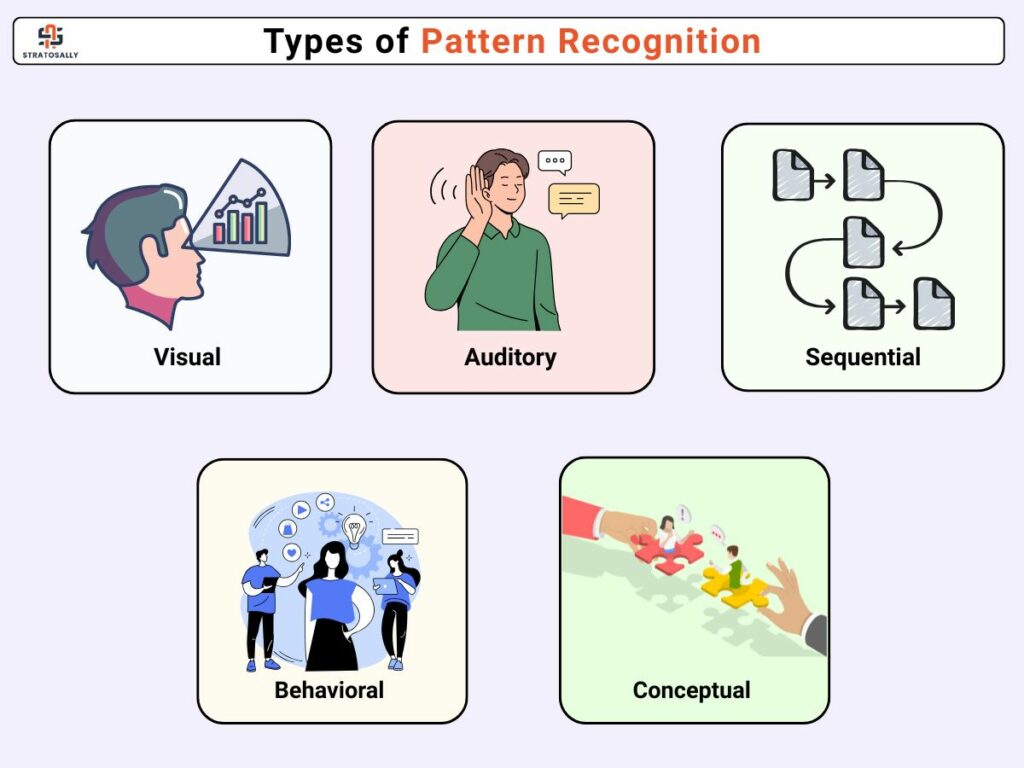
- Visual Pattern Recognition: It is about noticing shapes, colors, or visual arrangements by seeing them. For example, recognizing a friend in a crowd or identifying a brand from its logo.
- Auditory Pattern Recognition: It is about picking up familiar sounds, tones, or rhythms. For example, we can easily identify our friend’s mood just by hearing their voice.
- Sequential Pattern Recognition: This is understanding and predicting sequences. For example, when we watch a superhero cartoon, we can predict how he will take the entry.
- Behavioral Pattern Recognition: This is about reading body language, spotting trends in human behavior, or noticing how someone reacts in certain situations. Basically, this is all about noticing others’ behavior.
- Conceptual Pattern Recognition: Connecting ideas and spotting underlying themes in conversations, books, or problems.
Each of these works together, allowing us to process life more efficiently and make informed decisions.
Pattern Recognition, a Decision-Making Superpower
Every decision we make, whether it is a small one or a big one, is influenced by pattern recognition. We make decisions based on our past experiences and learning. Our brain quickly pulls data from past patterns, compares it to the present, and helps to decide.
For example, if you have had a bad reaction to a certain food before, your brain remembers and pushes you away from ordering it again.
Benefits of Developing Pattern Recognition
Let’s discuss some benefits of developing pattern recognition:
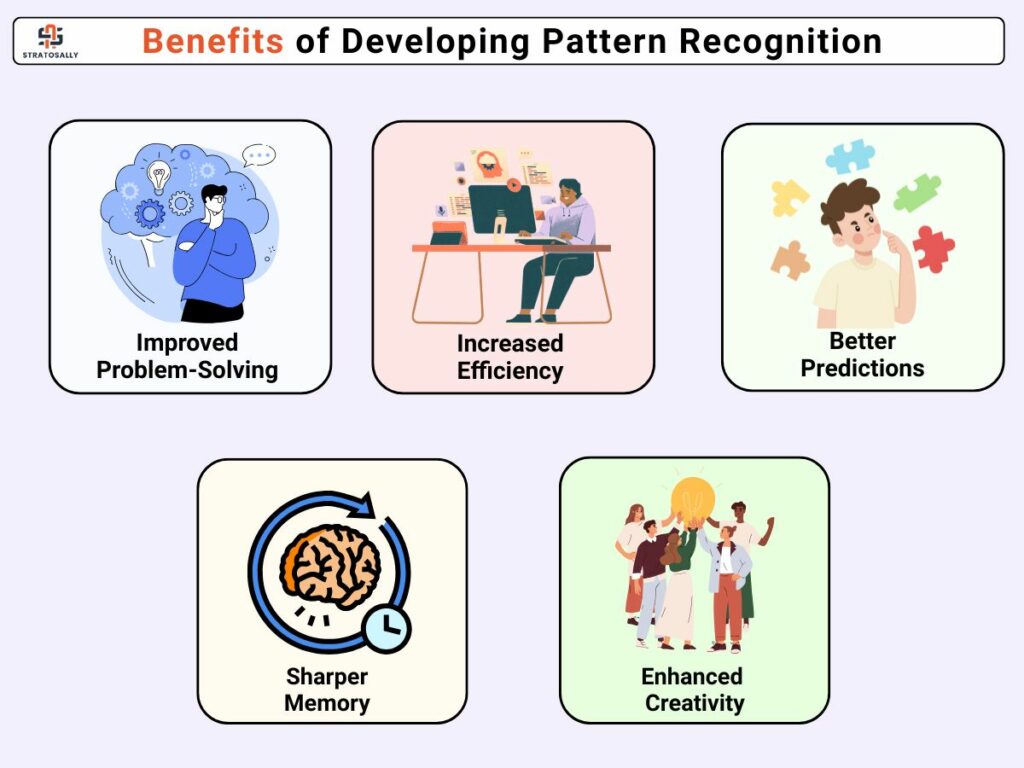
- Improved Problem Solving: When you train your brain to notice patterns, you can figure out the real cause instead of just fixing the symptoms, and you will start recognizing problems faster. This will help you spend less time guessing the problem and more time solving the problem. It is like having shortcuts to solutions.
- Increased Efficiency: Once you know the pattern, you don’t have to start again from zero. You already know what method will work out for you and what will not. This helps you get tasks done faster and with less effort.
- Better Predictions: Pattern recognition helps you see what’s coming before it happens. You can easily understand or solve anything that you have seen or dealt with before. For example, when you travel through the same route you’ve taken before, and you already know where you can get stuck in traffic, you will take another route. This saves stress and keeps you ahead of problems.
- Sharper Memory: Every time your brain notices and stores a pattern, it strengthens memory connections. It is like making a mental shortcut so that the next time you face a similar situation, you remember it faster. This makes it easier to recall important details and apply them when needed.
- Enhanced Creativity: Recognizing patterns is not just about seeing what is common, it also helps you notice when something is different. These differences can spark new ideas, which can enhance creativity.
How to Strengthen Your Pattern Recognition Skills
The best thing is that this skill can be trained and improved, like any other skill. Here’s how:
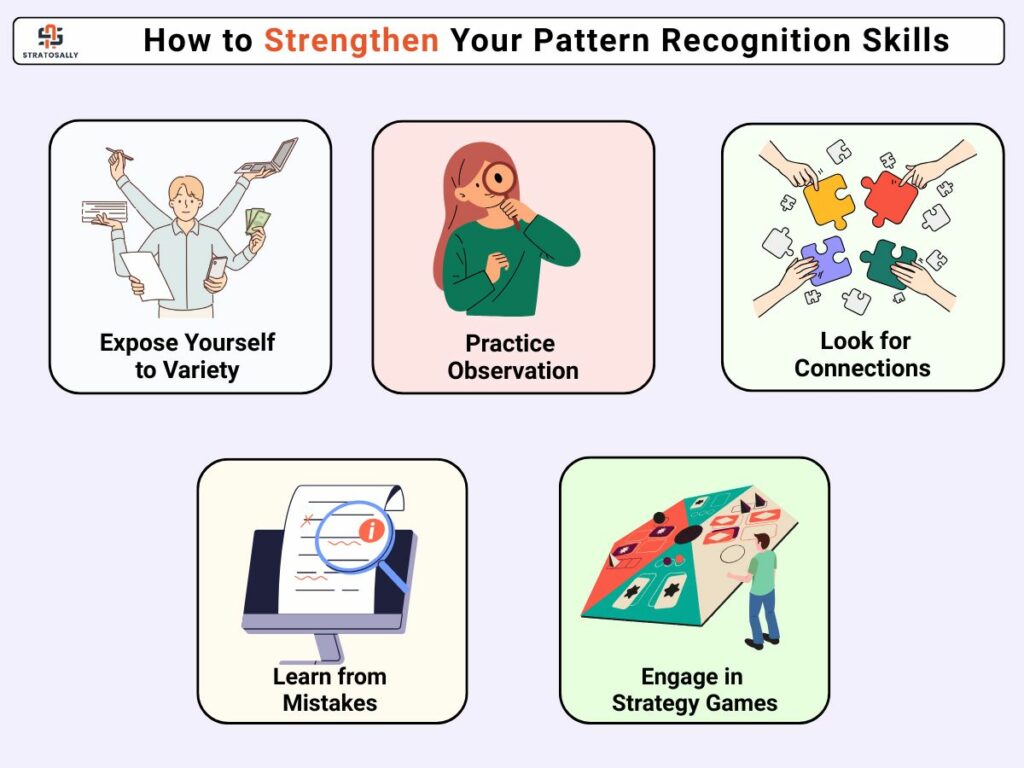
Expose Yourself to Variety: The best trick is to learn new things daily. Try learning a new language, reading novels of different genres, visiting new places, or trying new hobbies out of your comfort zone. Give your brain new experiences to work with. The more variety your brain sees, the better it gets at spotting patterns in all kinds of situations.
Practice Observation: Observe your surroundings, observe the small details around you, people’s expressions, or the small habits you repeat daily. The more you observe, the more your brain learns to connect the dots and recognize patterns.
Look for Connections: When you come across an idea, habit, or situation, ask yourself what it reminds you of or how it is different from something you already know. This simple habit strengthens your ability to link concepts and understand things faster.
Learn from Mistakes: Learn from every mistake, as every failure teaches a lesson. Instead of just moving on, notice the things that you lacked before. When you notice them, it helps you avoid repeating the same mistakes in the future, saving your time and energy.
Engage in Strategy Games: Games like chess, sudoku, and puzzles can be a good mental exercise. This helps your brain to think ahead, spot patterns, and plan your moves. Plus, they are a great way to challenge yourself while enjoying the process.
Final Thoughts
Pattern recognition is not just a skill, it is like a quiet friend walking beside you every day, which helps you make decisions, shapes how you react, and teaches you how to move through life’s twists and turns. It is the reason you can handle problems without panicking, learn from yesterday’s mistakes, and prepare for tomorrow’s surprises, often without even noticing. The more you feed this ability, the sharper and more intuitive you become, making wiser choices and solving problems in fresh ways.
So, the next time you just “know” your friend’s about to crack a joke, it’s not luck, and it’s not magic. It is your brain quietly training to be your personal life coach (without charging you a fee).
This isn’t the end. It’s the awkward ‘please follow us’ part. LinkedIn and Instagram. You know what to do.


